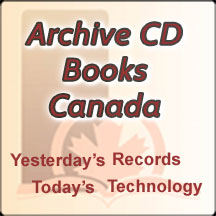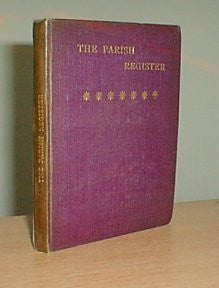Cat No.: GB1133:
This pocket book sized book is fantastically useful to explain the mysteries of Parish Registers. A delightful book to read, a vital, must have for beginner and advanced family historians alike. Packed full of interesting snippets of Parish Registers from around the country, the book explains the type of information that can be found, how to read it and what the entries really mean. Parish registers are some of the most frequently used and most important documents in researching family history, this book helps you to get the most out of the entries and ensures you won't miss a thing when researching baptisms, marriages and deaths.
No. of CDs is: 1 ; Format is: PDF ; Searchable?: YES;
FastFind: No; ISBN No.: unavailable;
MORE INFORMATION:
It gives you access to small details that are easy to over look but can add a lot to your research such as, the years in which there were excessive numbers of deaths i.e. Plague years and the terrible Influenza of 1728
It describes the varying spellings of some names to give you a guide of how your name may also have changed, for example
Dyngley, Dinely, Dingley, Dingleye, Dingly, Dinglye, Dinley and so on
It even has a chronological table outlining the history of Parish Registers, how Thomas Cromwell started them, to the times they were regulated, when registers were imperfectly kept and other interesting dates such as
1667 - A law is created insisting everyone was buried in wool, to bolster the wool trade
1735 - The new law forbids keeping records in Latin.
It gives you a brilliant idea of what to expect of Parish Registers, how they changed over time, what exactly they contain and much much more! It's full of details that will enlighten your research and deepen your understanding of Parish registers.
Marriage
Did your ancestors get married in a place totally unconnected with their families? This book explains how it was popular to exercise capricious choice, as people do today, over the place of marriage and how this led to "Marriage Shops" and churches which existed mainly to perform marriage ceremonies.
(marriages between 1654 and 1660), where they were celebrated by Justices of the Peace who wrote verbose entries like the one below, but only after the marriage had been announced on three successive market days
"Be it remembered that Thomas Clarke and Marie Collett both of the pish. Of Monkfriston hath come before me John Ward of Tanchill in the County of Yorke Esquire one of the Justices of the Peace for the West Ridinge and were married accordinge to the Act in that case made the thirteenth day of Januarii 1654. Jo Warde. (MonkFryston)"
There are lots of details about getting more from the marriage entries than just the names and dates. It goes into unregistered marriages, forbidden banns etc
Baptisms
It does the same for Burials and Baptisms as it does with marriages, gives lots of examples and describes the type of information you can glean from the records with a better understanding of them. For example:
In the 16th Century, Godparents names are sometimes included, although they are sometimes called sponsors.
"Rychard Blyke ye sonne of Mtr Gabryell Blyke whas crystened ye XXV Day of Januarye. Mtr Rychart Morton and Mtr Wyllyam Elton godfathers and Maystress Marye dauys godmother (Ledbury)"
It shows examples of Parsons trying to avoid tax,
"1697. John Fry had a child born in April but not baptised by me. (Tarrant Hinton)"
It describes how foundlings were baptised and named,
"1741 Aug. 10th A child that was found in Lodge Park was taken up and by order of the Church Wardens and overseers of the poor was bapt. by the name of Betty Keynsham (Keynsham)"
The Parsons ability to record illegitimacy as well as their moral judgements are discussed with examples such as,
"1590 John, the son of a strumpet born at Ockleys, bapt. May 28th (Kington Worc.)
The Parsons could really vent their anger in these entries and have left their opinions marked there for us to read. Often illegitimate children's baptisms do carry some description of the supposed Father since Parish Officers would try to track the Father down to prevent further expense to the rates. So you get entries like the one below,
"1603 Huge Pigot, a bastard son of Margaret Pigot begotten as she sayeth by Micheal Harrison an hostler dwelling with one Mr Ffroome in London near Newgate att the signe of the seriante Head xped xxxj Julie. (Mark Fryston)"
Burials
In this section it looks at obsolete customs such as the Chrysom Children, those babies that die under a month old who were still wrapped in the oil and swaddling cloth given to the Mother by the Parish.
It explains how being buried in wool, linen or completely without a coffin was usual until 1700 or later, giving the statistics for this and examples
It explains night burials, mostly done for those people who were not honourable or were ex communicated.
As well as all this it explains "half baptisms", why Alias' were used, the naming of twins, names used for tramps offspring, refugees, the theft of distinguished names, midwives who baptised and lots more. It has statistics relating to the number of marriages, births of males to females, plural births and so on. This really is a must have book!


